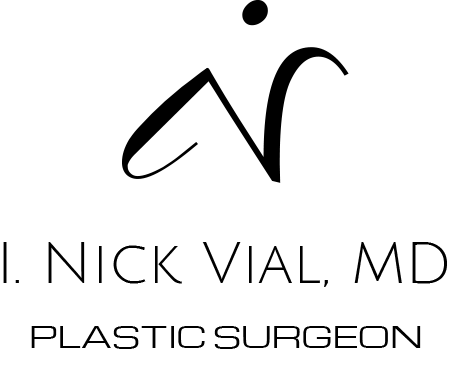During Mohs surgery, a dermatologist with specialty training in Mohs surgery, progressively removes cancerous tissues in layers until only healthy tissues remain. The goal of Mohs surgery is to remove cancer from the face with minimal tissue loss. Once your cancer is removed, your Mohs surgeon may ask that you see Dr. Vial for reconstruction. Plastic surgeons and Mohs surgeons often work together to get patients the best outcomes for complex or delicate reconstructions. The reconstruction aims to restore the form and function of the face.

How does reconstruction work?
The reconstruction depends entirely on the results of your preliminary Mohs surgery. Since no two Mohs defects are alike, the steps involved in the reconstruction process are always unique and personalized. Dr. Vial will carefully assess the size and location of your defect to create an individualized treatment plan. He will talk you through all your treatment options and discuss what you can expect from the procedure.
The reconstruction may require general anesthesia. However, the specific duration and anesthesia requirements may also differ from one procedure to the next. Dr. Vial and his team will provide a detailed overview of the treatment steps, aftercare, and the recovery process. You’ll know everything ahead of time, so you can proceed with the treatment confidently.
What are the reconstruction methods?
The results of your Mohs surgery and your treatment area will dictate the reconstruction process. The methodology used will depend entirely on your unique needs and concerns. Dr. Vial has specialized training in facial reconstruction. The following is a brief overview of common reconstruction methods.
Primary Closure
If the defect is small, Dr. Vial will make strategic incisions in the skin so that scars can be hidden in shadows and natural facial wrinkles. This is the simplest method.
Flaps
If the wound or treatment area is too large for primary closure, Dr. Vial will move the surrounding skin as a flap of tissue to cover the wound. This method can produce the best color match, as flaps are moved from the surrounding tissues.
Skin Grafts
Skin grafts are used if the defect is large, or if a local flap is not an option. Dr. Vial covers the wound with a skin graft from another part of your body. In some cases, a thin layer of skin (split-thickness graft) may be drawn from the thigh. In other cases, a thicker layer of skin (full-thickness graft) may be drawn from around the ear or collarbone. The color match for this method can be good.
Why choose Mohs reconstruction at invMD Plastic Surgery?
Dr. Vial is a board-certified plastic surgeon with extensive training and experience in facial reconstruction. He has trained at the world’s best institutions where many of these procedures continue to be advanced. He makes safety a top priority and has developed a reputation for beautiful, natural results.

